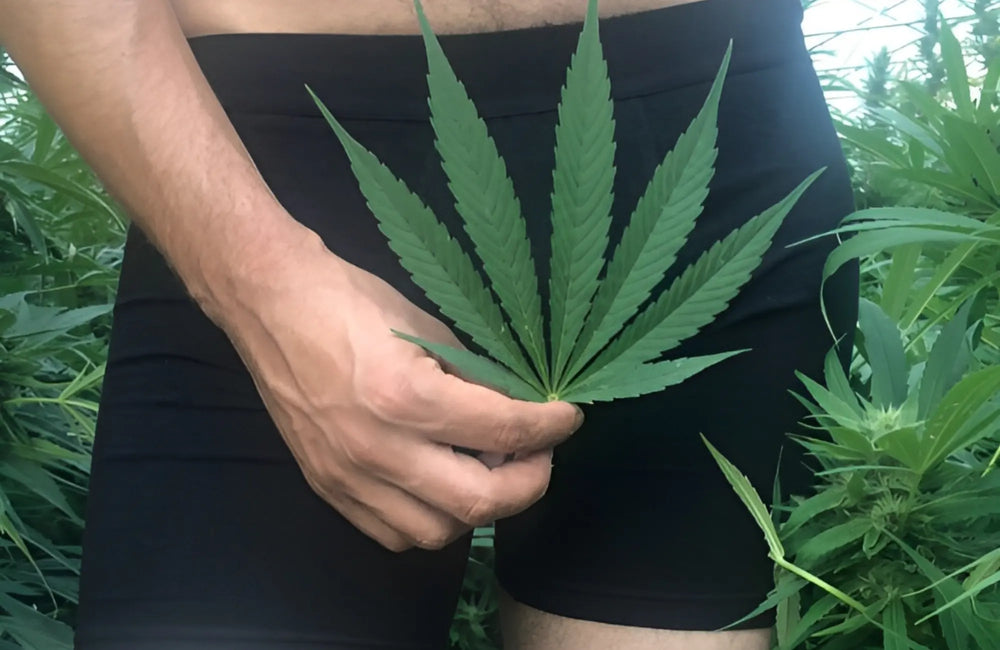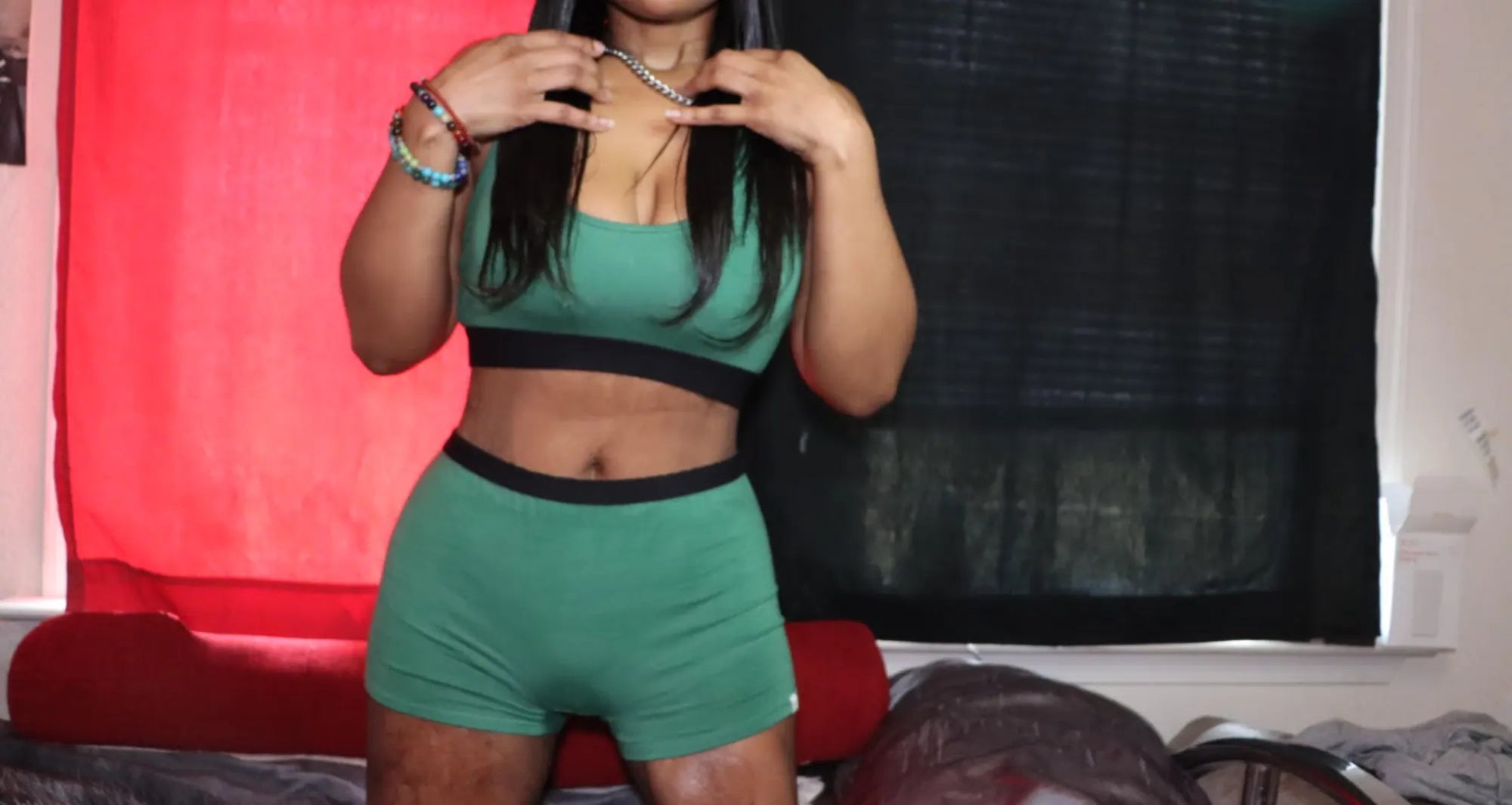
Best Material for Underwear: Men & Women
|
If you're not happy with your first pair of underwear after trying it on, let us know.
We'll send a new size or color, or give you a refund. No returns needed.

Megan Lemon
|
Underwear is a staple item in most people’s wardrobes. A comfy pair of undies is the base for a good outfit, after all. So, what is the best material for underwear? Which material allows for maximum all-day comfort and protection. Hang tight and I’ll tell you all about it!
Why do we wear underwear in the first place? To provide a barrier between our privates and the bacteria swimming all around us, of course. That’s why a great pair of underwear is one made from sustainable fabrics and low impact dyes. You don’t want any toxins or moisture-trapping fabrics around your most sensitive parts!
Alongside the main course (a guide to the best fabric for underwear), I’ll share with you all the factors that make a pair of undies great and other tips for keeping your downstairs happy and healthy. Hopefully, by the end, you’ll never have to complain about annoying, suffocating underwear ever again!
The best underwear fabrics are breathable, soft on the skin, and durable! However,the functionality of each type of fabric is different. Consider these personal factors before choosing the best fabric for underwear:
Let’s face it, women are programmed to care more about underwear than men. The best everyday option for women’s underwear is a simple style made of hemp or organic cotton. If you choose to experiment with different lingerie options (like lace or mesh, etc.) make sure that those undies have a cotton gusset (the lining on the underwear that comes in direct contact with your kitty). It helps keep you well-ventilated even if the rest of the panty is made with synthetic fabric.
With all of those qualities in mind, the most practical, sustainable choice for men’s underwear fabric is something like hemp or recycled synthetic fabrics. Both of those options provide a good amount of support. Hemp is a natural fiber and will provide breathability. Recycled nylon or polyester still has some downsides but it’s a fine alternative to fast fashion if you really need that stretch and support.
Why natural? Well, fabrics like hemp and cotton make for naturally breathable underwear which is an essential quality in good underwear. The truth is we all sweat, everywhere, and when we wear clothing that’s not designed to promote airflow things can get a bit...swampy. Gross. Sustainably harvested, natural fabrics simply work the best with your body. Bonus points for the whole “not destroying the environment during their production thing.”
The fact that polyester and nylon underwear are touted as the best workout underwear makes me cringe a little. Yes, they have the ability to wick away moisture when blended with other materials. However, in their original state, these fabrics are neither breathable nor moisture wicking and the underwear made from them tends to be really tight. Big yikes all around.
On the other end of the spectrum, the antibacterial properties of hemp and other natural fibers are perfect qualities for underwear material. For example, the vagina produces several types of healthy bacteria naturally, but with a few missteps, it can easily become a breeding ground for bad bacteria.
That’s why practicing good hygiene and avoiding tight underwear are crucial steps to take to keep your genitals healthy. This applies to everyone, boys, not just us vagina owners! Of course, housing your genitals in the best underwear material is another important step to take, so let’s finally find out what that is!
Here we have it folks, a list of the best material for underwear! Most of these options for underwear fabrics are natural and sustainable because I care about our gorgeous planet and the health and happiness of your gorgeous butts. Not all these fabrics have the same properties, so I’ll divulge all the info you need to pick the best choice for you and your lifestyle!
I’ll be honest before I tried WAMA Underwear, I didn’t really care about what kind of underwear I wore. Now, I am an absolute hemp fan girl. I could go on and on about hemp clothing benefits but the most important thing is that hemp underwear is so comfortable and way more durable than the polyester nonsense I used to wear (which on serval occasions disintegrated right off my body in the middle of the day).
Hemp is one of the strongest natural fibers, having even been used to make hemp rope for many centuries, and it’s perfectly suited for an item that sees as much heavy use as underwear. A pair of hemp undies is sure to last a long time without losing its shape. Not to mention, hemp is antibacterial and antimicrobial so it’s also the healthiest option for your private bits.
Cotton is generally considered the best fabric option for underwear. I prefer organic cotton to traditional because the production process of organic cotton has less environmental impact, but either is a good option in a pinch.
Cotton is lightweight and breathable and absorbent. It won’t trap any sweat or moisture and allows for good airflow. Since your undies protect a warm spot where a lot of bacteria can easily form, those are some great qualities for them to have.
Modal is a natural fabric recently made popular by small brands and businesses. It is made from cellulose tree pulp and its production process is not harmful to the planet.
Undies made from this fabric will resemble cotton but feel a lot more like silk. This fabric is an awesome option for those looking for something light and airy, especially for underwear to sleep in. It may not, however, be the best choice for men looking for extra support down there.
This option is for my fancy boys and girlies. Silk is definitely not a great fabric option for everyday underwear. (Well, unless you’re a Kardashian, I guess). But I say everyone deserves a little treat and a pair or two of silk panties (or boxers) in your drawer is a good thing to have.
Silk is a natural fiber and it’s very lightweight. It’s breathable as heck and naturally moisture-wicking. It is, however, very delicate (aka: complicated to wash!). Real silk undies are also not on the cheaper end of the spectrum.
If you’re really into the tight fit and support of traditional synthetic sports underwear then there are eco-friendly (well, friendlier) options out there. Several underwear brands on the market offer options using at least some amount of recycled fabric.
This option still has the same downsides regarding breathability and skin sensitivity issues, but I know that some people find synthetic underwear to be more comfortable for working out. At least there are semi-green options out there!
My boobilicious friends know how hard it is to find a bra that is both supportive and comfortable. In fact, those two concepts seem mutually exclusive when it comes to bra shopping.
Even some of the fabrics that make for the best underwear just don’t have what it takes to provide the right support us modern ladies need for our chests. Here are the fabrics that can stand up to the test and make for bras that anybody can wear!
Did I mention there are studies that prove hemp stronger than steel? Yeah, this magic fabric is well equipped to handle your titties, big or small. Especially if you opt for a racerback bralette. This style of bralette provides a good amount of support thanks to the strong elastic at the bottom and the hemp fabric which is exceptional at holding its shape.
Since cotton is a pretty standard material for bras, there are luckily lots of options in organic cotton available on the market. This goes for bralettes as well as traditional underwire bras. Sometimes, it’s worth sticking by the most common option.
Yup, this “kinda green” option also applies to bras and bralettes. There’s even a popular brand making bralettes out of recycled water bottles! A semi-synthetic or recycled lining helps to provide the extra support that natural fabrics can’t offer. This option is best for those looking for a bra for high impact workouts.
With the popularity of sustainable clothing rising, many clothing brands are now motivated to claim sustainability. But you can’t always trust what they say because they may just be greenwashing (or falsely claiming certain sustainability and ethical standards). So it’s really important to do your research:
Everyone wears underwear (unless you’re super dedicated to freeballing…you do you). And everyone has their own style and comfort preferences. The fabrics I mentioned today are the best for your butts, bits, and the planet.
If you swear by synthetic undies, there’s no shame! Everyone should do what suits their lifestyles best, but I hope you’re inspired to try one of the greener choices we discussed. You never know, you might end up with a new favorite!
What is your personal best material for underwear? Is it one of the ones I mentioned or something else entirely? Tell me all about it in the comments!
Get updates on restocks, new color and size releases, and upcoming product launches. You’ll also get a 15% discount on your first order of hemp underwear.












